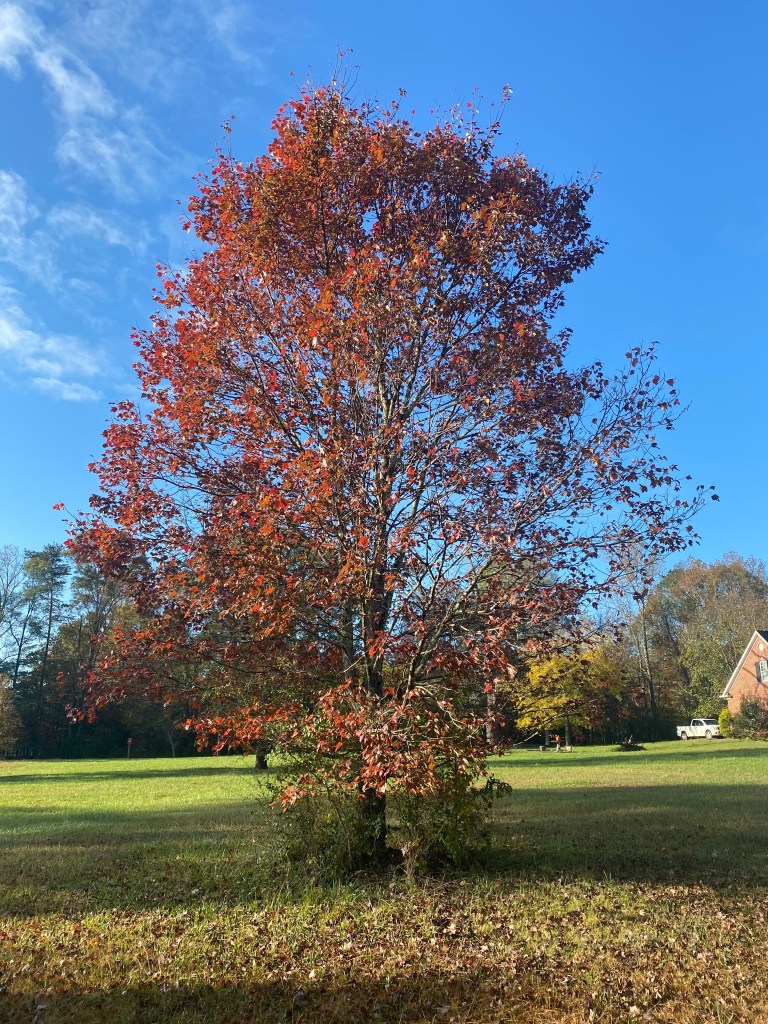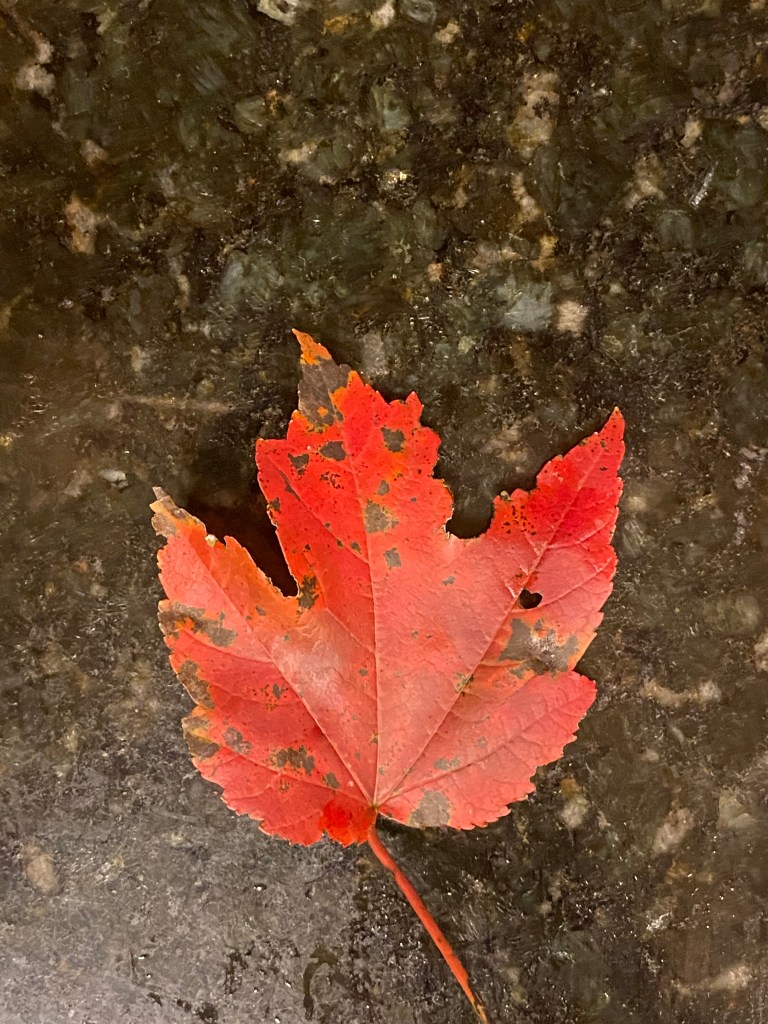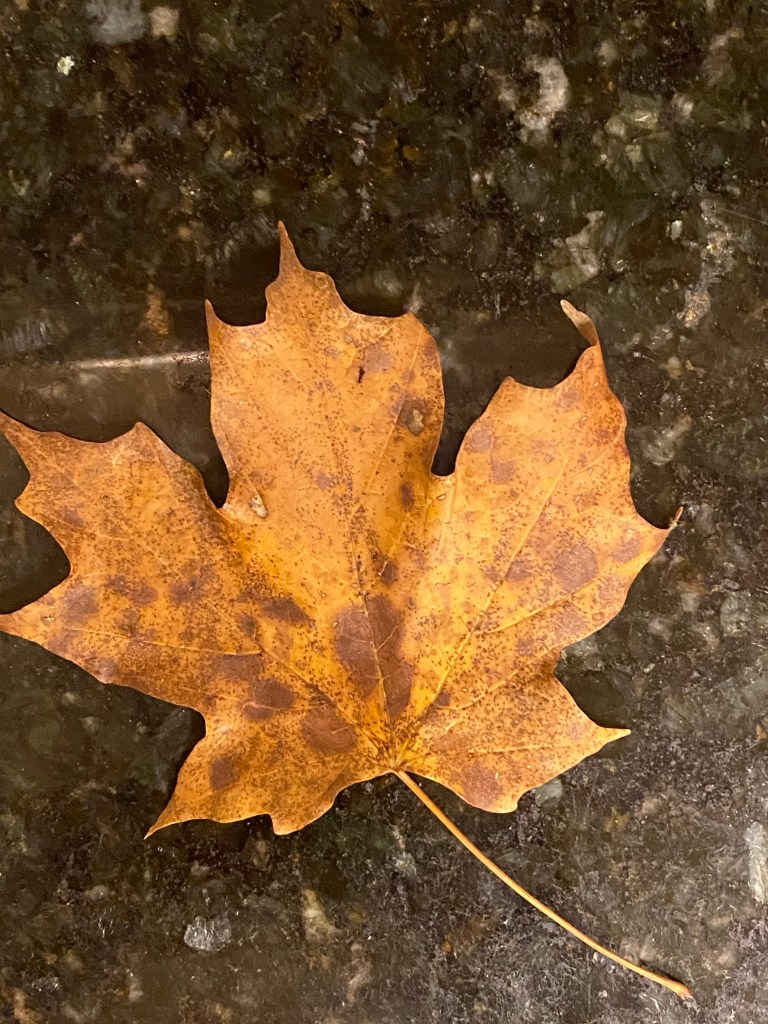
My love of deciduous trees started with the onset of 10th Grade (1981-1982). Daddy had bought me Copper and Chief, my two beloved Black and Tan coonhounds in August, and we four were spending hours in the autumn-laden ridges of Varnell. As we would either walk up and down the ridges, talk, or listen to Chief and Copper begin their innate, melodious bawling, we would discuss the trees of our woods. We mostly spoke of the noble oaks, but, of course, the maples were embedded in the woods as well. As I write this entry which is dedicated to maples, our oak trees behind our house have burst forth with color. Seriously, on Friday November 6, 2020, the oaks were green as green can be. By Sunday the 8th, they had turned reds, yellows, & oranges!
My father, Copper, Chief, and I spent the whole winter tromping through the woods that later went bare, of course. Then, the spring of 1982 came with all the new green and rebirth of plants, trees, and flowers. My 10th grade biology teacher had assigned to us a final project where we were to complete a spring flower and leaf album of 25 plants and flowers we could find in our environment. I asked Daddy to help me. One evening, he and I walked the woods behind our house with Copper and Chief. Several days later, Daddy and I walked Nanny’s yard collecting leaves. It was May 15, 1982 (Nanny’s birthday and my dad had made her a birthday cake while I mowed Nanny’s yard.. it was Saturday.. we had a family celebration after I mowed). Thirteen days later, Friday May 28, Daddy was dead. I had to finish the album without him to turn in after Memorial Day, and Nanny came to the house with some old-timey botanical magazines (We had to have those Latin, botanical names written by those leaves, ya know!) that she had collected through the years to help me fumble through the finishing touches of the album. Well, I finished it, and, sadly, I did not make a 100…. I made a 97. I think my teacher doubted some of the Latin names just between us readers; however, that love of studying and labeling flora has stuck with me.
As I wrote this past July, this COVID season has made me see things through my nature loving – Cherokee ( Yes, Pap Edwards…. Edwards Park Varnell , GA at Plainview…. Cleveland Road was my Cherokee ancestor to the Caylors… great-great-great grandfather) eyes. Walking with my family or jogging by myself on this land has tuned me in better to my surroundings, and I am very grateful that God’s spirit touches my spirit with the love and desire to research and share about my environment.
I hope you enjoy our mesmerizing maples. I’ve placed a photo of the entire maple tree with a side-by-side photo of its autumn colored leaf/leaves. Also, Thanksgiving 2020 may be another 17 days away, but I do want to say an early “Happy Thanksgiving!” to you all. God is great. Peace / Shalom.









